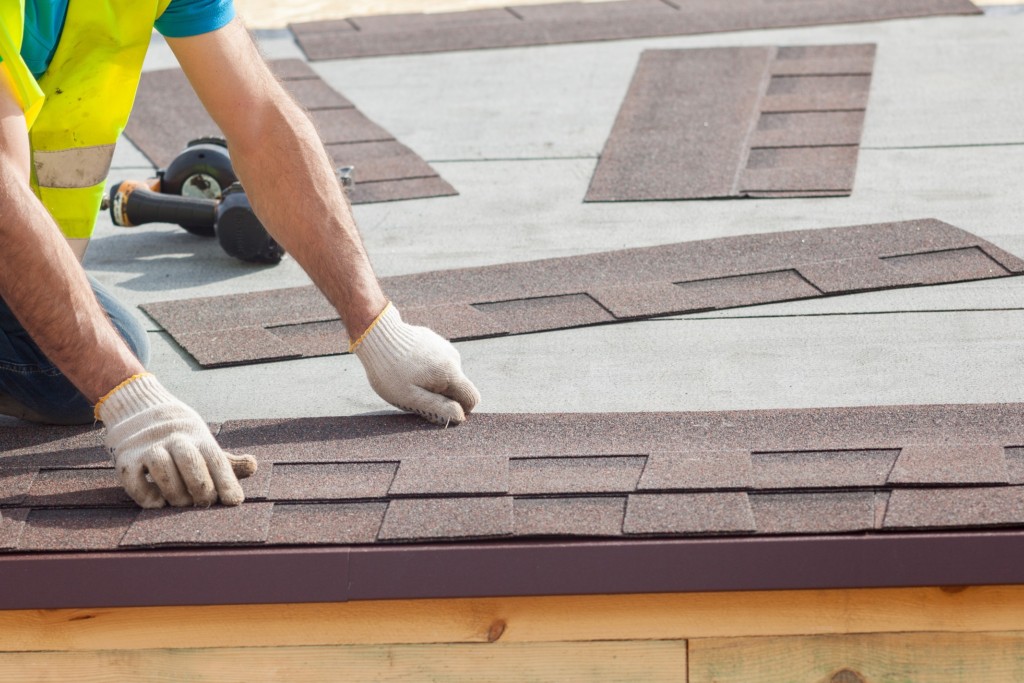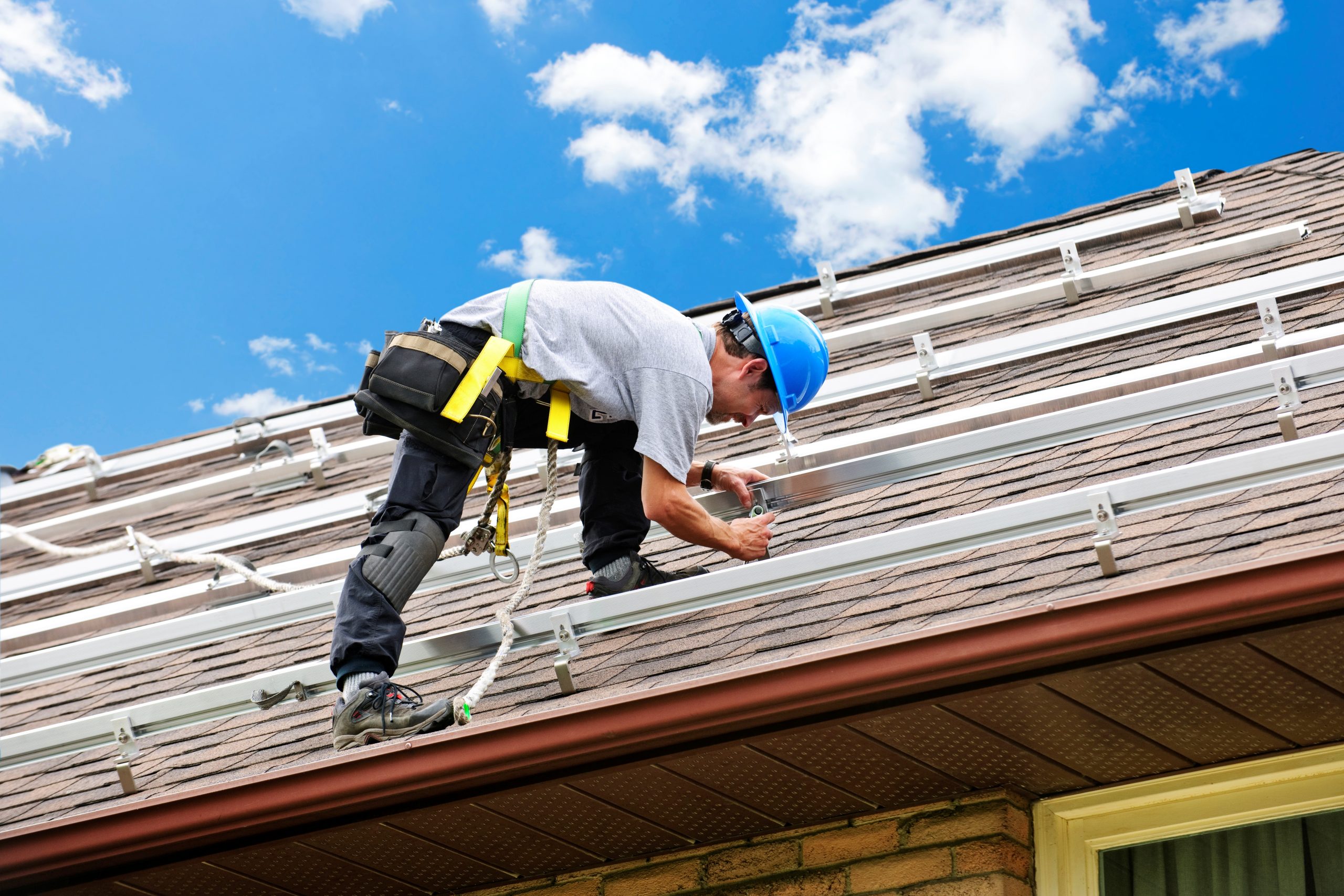The Ultimate List for Roof Install: Making Sure High Quality and Sturdiness
The procedure of installing a roof calls for cautious attention to detail. A comprehensive checklist can aid guarantee quality and toughness throughout the task. From evaluating the existing roof condition to choosing the ideal materials, each action is necessary. Correct preparation and devices play a crucial function in attaining a successful installment. Several overlook the significance of final inspections and ongoing upkeep. Recognizing these components can greatly influence the long life of a brand-new roofing.
Assessing Your Present Roofing System Condition
Exactly how can one successfully figure out the condition of their existing roof covering? A comprehensive examination is necessary for reviewing a roof covering's stability. Homeowners ought to start by taking a look at the roofing system from the ground, searching for noticeable indicators of wear such as missing out on tiles, drooping areas, or discoloration. Closer examination can be done by accessing the roofing system itself, where one should inspect for cracked or curled tiles and check flashing around vents and chimneys.Additionally, the inside of the home warrants focus; water spots or mold development on ceilings and walls might show leakages. Attic examinations can reveal prospective problems, such as poor ventilation or indications of moisture.Regular assessments, ideally two times a year, can assist recognize troubles early and protect against costly repair services. By comprehending the roofing's current state, home owners can make informed choices about required maintenance or replacements.
Selecting the Right Roof Covering Products
When choosing roofing materials, what factors should home owners take into consideration to ensure a resilient and efficient selection? The environment plays a substantial role; materials must stand up to neighborhood weather conditions, whether it's heavy rainfall, snow, or intense sun. Next, the durability of the product is crucial; alternatives like metal or slate deal extended lifespans compared to asphalt tiles. House owners need to also review the product's weight, as this can influence the architectural integrity of the home. Furthermore, appearances issue; the picked material should enhance the overall building style. Power efficiency is one more consideration; some products mirror warmth, decreasing cooling expenses. Finally, budget plan restrictions will determine selections; while some products may have a reduced upfront expense, lasting longevity can cause higher savings. By weighing these variables, home owners can make educated choices that boost their roofing's top quality and durability.
Planning for Setup
Before the installation procedure starts, homeowners have to ensure that their building is properly prepared to accommodate the new roof. This prep work involves numerous vital steps to guarantee a smooth and efficient installation. Home owners should remove the area around the house of any particles, tools, or furnishings that might hinder accessibility for service providers. Furthermore, it is very important to inform neighbors regarding the future work to lessen disruption and safe cooperation.Next, property owners must examine their existing roofing and structural components, resolving any potential concerns such as decaying wood or leaks that could influence the installment. Additionally, protecting essential authorizations and adhering to regional building regulations is vital for conformity and safety and security. Finally, setting up the installment during positive weather aids stop hold-ups and assurances that the job earnings without problems. Appropriate preparation establishes the foundation for a successful roofing job, ultimately enhancing the longevity and efficiency of the new roof.

Necessary Tools and Devices
In roofing installation, having the right tools and devices is important for an effective project. This includes crucial security equipment, different roof installment devices, and reliable material managing tools. Correct preparation and selection of these things can substantially improve effectiveness and safety and security on the work website.
Security Equipment Needs
Security equipment is a necessary part of any roofing system setup project, guaranteeing the well-being of employees at raised heights. Vital safety and security equipment includes construction hats, which shield versus falling debris, and security goggles to secure the eyes from dust and fragments. Non-slip footwear is considerable for keeping hold on steep surface areas, while harnesses and lanyards offer autumn security, protecting against serious injuries. Gloves aid shield hands from sharp materials and decrease exhaustion during extended periods of work. Furthermore, high-visibility vests improve visibility, promoting awareness among team participants and neighboring employees. The use of ear defense might additionally be a good idea in loud settings. In general, sticking to security gear needs is crucial for a safe and effective roof covering installment process.

Roof Installment Devices
Correct precaution prepared for an effective roof covering job, however having the right devices and devices is equally essential. Crucial tools for roofing installation include a ladder, allowing safe accessibility to the roofing, and a roof covering nail weapon to assure efficient and safe attachment of products. A chalk line is vital for noting straight lines, while an energy knife is needed for reducing roof products accurately. In addition, a crowbar aids in removing old shingles. Employees ought to likewise have a level to confirm correct positioning and water drainage. honolulu roofing contractor A great set of job handwear covers safeguards hands while supplying grip. Together, these tools facilitate a smooth roofing procedure, boosting both quality and longevity.
Product Handling Devices

A range of material handling devices is important for an efficient roof installment process. Tools such as forklifts, lifts, and dollies help with the movement of heavy materials like roof shingles and underlayment to the job website and onto the roofing. Utilizing scaffolding and ladders assurances risk-free accessibility to raised locations while lessening the risk of injury. Tarps and containers are essential for proper storage and organization of products, preventing damages and guaranteeing very easy retrieval. Additionally, a crane may be required for larger roof jobs to lift significant products directly onto the roof covering. Appropriate training being used this tools is crucial; it enhances operations performance and adds to overall project security, guaranteeing an effective roof covering installation.
Step-by-Step Installment Process
The detailed installation process is crucial for a successful roofing system installment. It begins with preparing the roof covering surface, followed by the appropriate installment of underlayment, and wraps up with the reliable securing of roofing products. Each of these steps plays an essential role in making sure the sturdiness and functionality of the roofing system.
Prepare the Roofing System Surface
Preparing the roof covering surface is crucial for ensuring an effective setup of roof covering products. This process begins with a detailed evaluation to recognize any type of existing damage or debris. Any type of loose shingles, protruding nails, or old roof products must be gotten rid of to create a clean, smooth foundation. Next, the roof deck ought to be checked for rot or architectural problems, as these can compromise the integrity of the new roof. After repair services, a detailed cleaning is necessary; this includes sweeping away dirt, leaves, and any type of other contaminants that can impede attachment. Making sure appropriate water drainage and air flow is important, as these factors influence the longevity of the roof covering. A well-prepared surface area sets the stage for excellent installation and sturdiness.
Install Underlayment Effectively
Setting up underlayment properly is fundamental for enhancing the total efficiency of the roofing system. The procedure begins with picking the proper underlayment material, which can consist of really felt, artificial, or rubberized choices. Next off, verify the roof surface is clean and dry before laying the underlayment - honolulu roofing contractor. Begin at the most affordable point of the roof, presenting the underlayment flat and overlapping each row by at least 6 inches. It is necessary to protect the underlayment in position with staples or roofing nails, preventing spaces or wrinkles that might jeopardize water resistance. Finally, trim excess material at the sides, ensuring a cool finish. This meticulous setup action is important for providing an added layer of protection versus dampness and enhancing longevity
Secure Roof Covering Materials Successfully
After confirming the underlayment is correctly mounted, the following step includes protecting the roof products efficiently. Initially, the roofer ought to gather all needed materials, including tiles, nails, and blinking. Beginning at the most affordable point of the roofing, shingles should be laid in a staggered pattern, confirming correct overlap to stop leaks. Each roof shingles should be attached with nails, utilizing the supplier's suggested spacing and amount. It is important to drive nails directly, staying clear of over-penetration, which can endanger the material. Blinking ought to be installed around smokeshafts and vents to enhance waterproofing. The service provider needs to conduct a comprehensive assessment to confirm all products are safely attached, as this will considerably influence the roof covering's total sturdiness and long life.
Performing Last Examinations
Comprehensive last assessments are vital to guarantee that a freshly installed roofing system fulfills all security and top quality standards. This vital action includes assessing the entire roof for any kind of potential concerns that might occur post-installation. Inspectors should examine the placement of shingles, making specific they are appropriately secured and devoid of flaws. Flashing and ventilation systems have to additionally be evaluated for appropriate setup and functionality.Additionally, the examiner ought to examine rain gutters and downspouts to verify they are properly positioned to facilitate water drain. Any type of indications of leaks, misaligned materials, or poor securing around infiltrations need to be addressed instantly. Roofing professionals need to additionally ensure that all particles from the installation procedure is gotten rid of, leaving the site clean and safe. Carrying out these thorough inspections helps avoid future issues, ultimately extending the life-span of the roofing and supplying home owners with assurance concerning their financial investment.
Keeping Your New Roofing
Proper upkeep is important for guaranteeing the durability and performance of a brand-new roofing system. Property owners need to perform normal assessments at the very least two times a year, preferably in springtime and autumn, to recognize possible concerns early. Throughout these assessments, they must search for signs of damage, such as missing tiles, leakages, or particles build-up, which can hinder water drainage and advertise mold growth.Cleaning rain gutters and downspouts is vital, as blocked systems can cause water damage and structural problems. In addition, trimming overhanging branches can avoid abrasion and particles accumulation on the roofing system surface.It's additionally advisable to schedule professional evaluations every few years to examine the roof's condition extensively. Keeping records of maintenance tasks and repairs can aid track the roofing system's efficiency with time (honolulu roofing materials). By sticking to a consistent upkeep regimen, home owners can protect their investment and guarantee their brand-new roofing system continues to be effective for several years to come
Often Asked Concerns
Just how Long Does a Common Roofing System Installment Take?
The period of a common roofing installation varies based upon aspects such as roof covering size, products, and weather conditions. Generally, it can take anywhere from eventually to several weeks to finish the setup.
Can I Set Up a New Roofing Over an Existing One?
The inquiry of mounting a brand-new roofing over an existing one typically arises. Several property owners consider this option for cost-effectiveness, however it is necessary to assess regional building ordinance and the structural stability of the existing roof.
What Permits Are Needed for Roofing System Setup?
Prior to installing a roof, one should inspect local laws. Commonly, structure permits are called for, together with inspections to ensure compliance with safety criteria and zoning legislations. Consulting with local authorities is necessary for correct support.
What Guarantees Are Available for Roofing Materials?
Numerous warranties exist for roofing materials, commonly including producer warranties covering problems and efficiency. In addition, some professionals offer workmanship service warranties, guaranteeing installment high quality. Customers must thoroughly assess terms to understand insurance coverage duration and restrictions.
Just How Can Weather Condition Impact the Installment Process?
Climate considerably impacts the installment procedure, as rainfall, snow, or extreme temperatures can delay work, influence material adhesion, and concession safety and security. Appropriate preparation and scheduling around weather prediction are essential for effective roof setup.